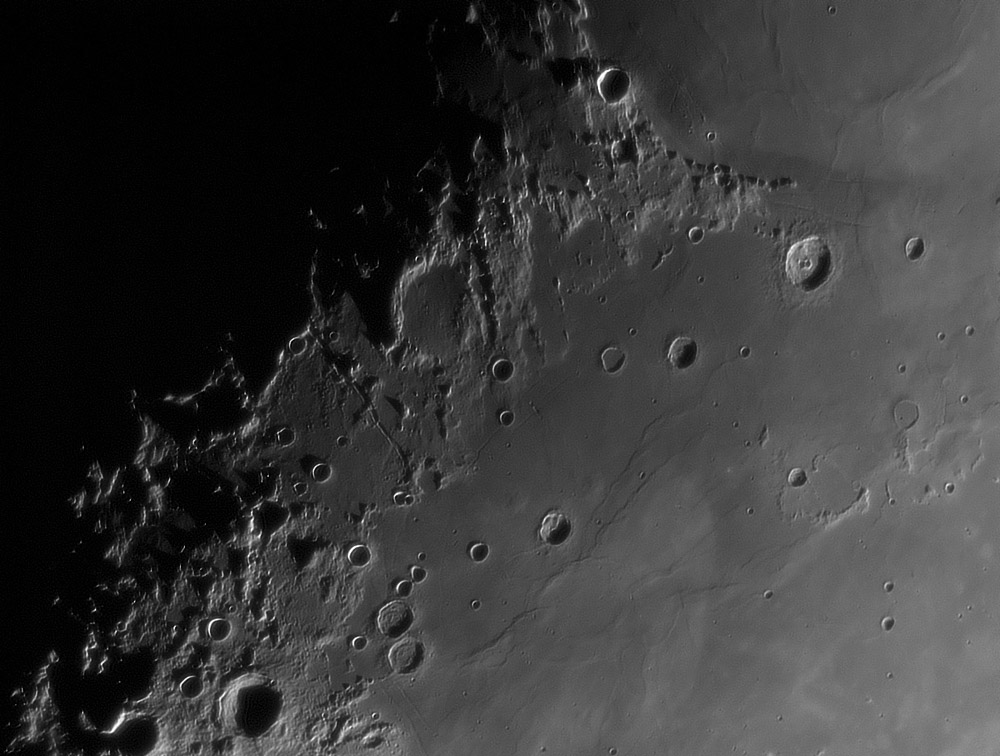Difference between revisions of "May 21, 2012"
| Line 3: | Line 3: | ||
<!-- ws:start:WikiTextHeadingRule:0:<h1> --> | <!-- ws:start:WikiTextHeadingRule:0:<h1> --> | ||
<!-- ws:start:WikiTextLocalImageRule:6:<img src="/file/view/LPOD-May21-12.jpg/337691548/LPOD-May21-12.jpg" alt="" title="" /> -->[[File:LPOD-May21-12.jpg|LPOD-May21-12.jpg]]<!-- ws:end:WikiTextLocalImageRule:6 --><br /> | <!-- ws:start:WikiTextLocalImageRule:6:<img src="/file/view/LPOD-May21-12.jpg/337691548/LPOD-May21-12.jpg" alt="" title="" /> -->[[File:LPOD-May21-12.jpg|LPOD-May21-12.jpg]]<!-- ws:end:WikiTextLocalImageRule:6 --><br /> | ||
| − | <em>image by [mailto:jupiter182002@yahoo.ca | + | <em>image by [mailto:jupiter182002@yahoo.ca Maximilian Teodorescu]</em><br /> |
<br /> | <br /> | ||
My friend Raf Lena invented the wonderful word <em>intrigeous</em>. The word is perfect for this region of the Moon because of its fascinating diversity of landforms. One of the peculiarities, often overlooked until pointed out, is the very sharply bounded brightness variation surrounding Lamont, the mare ridge oval near bottom center of the image. This looks like it should be the boundary between mare lavas of different compositions, and it may be, but there is no evidence of flow edges, and the boundary crosses ridges that one would think lavas wouldn't. Another boundary is the sloping one between basin ejecta and highlands at left, and Mare Tranquillitatis. Did the Ariadaeus Rille originally continued further east, but was covered by later mare lavas? Similarly, basin crater chains such as those near Julius Ceasar were covered by lavas, some of which flowed into the elongated depressions. The filling of the Tranquillitatis Basin with lava continued over time, so that flows had time to solidify and then fracture around the basin's edges as the interior subsided. Familes of these thin cracks are hard to see but occur all along the western edge of the mare. There are many more intrigeous features, left for each observer to discover.<br /> | My friend Raf Lena invented the wonderful word <em>intrigeous</em>. The word is perfect for this region of the Moon because of its fascinating diversity of landforms. One of the peculiarities, often overlooked until pointed out, is the very sharply bounded brightness variation surrounding Lamont, the mare ridge oval near bottom center of the image. This looks like it should be the boundary between mare lavas of different compositions, and it may be, but there is no evidence of flow edges, and the boundary crosses ridges that one would think lavas wouldn't. Another boundary is the sloping one between basin ejecta and highlands at left, and Mare Tranquillitatis. Did the Ariadaeus Rille originally continued further east, but was covered by later mare lavas? Similarly, basin crater chains such as those near Julius Ceasar were covered by lavas, some of which flowed into the elongated depressions. The filling of the Tranquillitatis Basin with lava continued over time, so that flows had time to solidify and then fracture around the basin's edges as the interior subsided. Familes of these thin cracks are hard to see but occur all along the western edge of the mare. There are many more intrigeous features, left for each observer to discover.<br /> | ||
<br /> | <br /> | ||
| − | <em>[mailto:tychocrater@yahoo.com | + | <em>[mailto:tychocrater@yahoo.com Chuck Wood]</em><br /> |
<br /> | <br /> | ||
<strong>Technical Details</strong><br /> | <strong>Technical Details</strong><br /> | ||
Revision as of 17:49, 11 January 2015
Boundaries And Fractures

image by Maximilian Teodorescu
My friend Raf Lena invented the wonderful word intrigeous. The word is perfect for this region of the Moon because of its fascinating diversity of landforms. One of the peculiarities, often overlooked until pointed out, is the very sharply bounded brightness variation surrounding Lamont, the mare ridge oval near bottom center of the image. This looks like it should be the boundary between mare lavas of different compositions, and it may be, but there is no evidence of flow edges, and the boundary crosses ridges that one would think lavas wouldn't. Another boundary is the sloping one between basin ejecta and highlands at left, and Mare Tranquillitatis. Did the Ariadaeus Rille originally continued further east, but was covered by later mare lavas? Similarly, basin crater chains such as those near Julius Ceasar were covered by lavas, some of which flowed into the elongated depressions. The filling of the Tranquillitatis Basin with lava continued over time, so that flows had time to solidify and then fracture around the basin's edges as the interior subsided. Familes of these thin cracks are hard to see but occur all along the western edge of the mare. There are many more intrigeous features, left for each observer to discover.
Chuck Wood
Technical Details
April 27, 2012. C11 @F/10, DBK 41 AU02.AS with IR pass filter, 2000/4000 frames.
Related Links
Rükl plate 35



